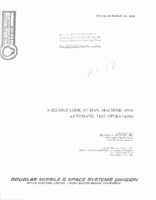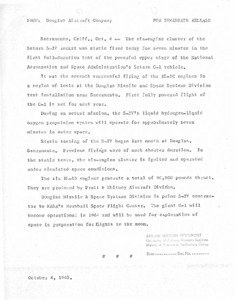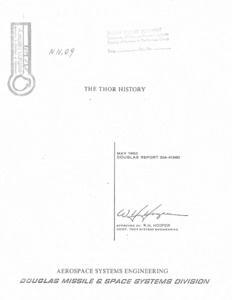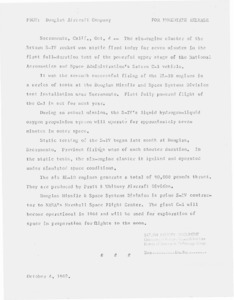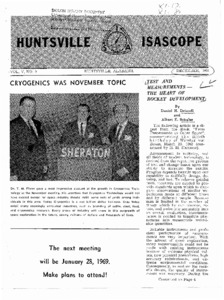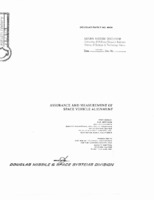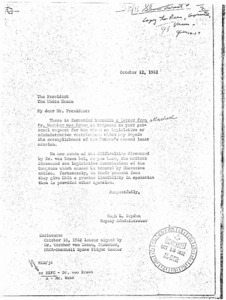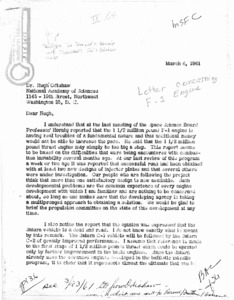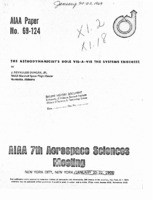
Browse Items (970 total)
Sort by:
-
"A Second Look at Man, Machine, and Automatic Test Operations."
A summary found following the errata page reads: "This paper presents a second look at the subject of the man-machine relationship in automatic test operations. 'Man, Machine, and Automatic Test Operations' was presented by the writer at Battelle Memorial Institute in November of 1963...It is the purpose of this second look at the man-machine interface to pinpoint those concepts which have proven their worth with time and those concepts which have proven to be weak, and as a result modified with time." This paper was prepared by George F. Meister, Jr. -
"Douglas Aircraft Company Press release."
Press release covering the static firing of the S-IV rocket for a full seven minutes. -
The History of Thor.
This history is intended as a quick orientation source and as a ready-reference for review of the Thor and its systems. The report briefly states the development of Thor, summarizes and chronicles Thor missile and booster launchings, provides illustrations and descriptions of the vehicle systems, relates their genealogy, explains some of the performance capabilities of the Thor and Thor-based vehicles used, and focuses attention to the exploration of space by Douglas Aircraft Company, Inc. -
"Six-engine cluster of the Saturn S-IV rocket."
A press-release detailing the successfuly firing and the specfic launching information of the Saturn I-V rocket-launch. -
Huntsville Isascope: Volume V, No. 9.
The following article is a digest from the Book, "From Peenemunde to Outer Space", commemorating the fiftieth birthday of Wernher von Braun, March 23, 1962 condensed by H. M. Hammac). -
"Assurance and Measurement of Space Vehicle Alignment."
Prepared by A. W. Dryden, Quality Engineer, Quality Engineering, Reliability Assurance, Space Systems Center, Douglas Aircraft Company, Inc., Huntington Beach, California. Presented to the 21st Annual Technical Conference for the American Society for Quality Control, Chicago, Illinois. 30 May to 2 June 1967. -
"Letter to The President and White House."
Correspondance between the President and Hugh L. Dryden regarding administrative limitations of the President's power. -
Letter to Dr. Hugh Odishaw.
Letter to Hugh Odishaw from Donald Hornig regarding a previous meeting as well as an F-1 engine report. -
"Saturn Radar Altimeter."
Paper given at the AIAA Guidance and Control Conference, August 12-14, 1963, Massachusetts Institute of Technology, Cambridge, Massachusetts. -
"The Astrodynamicist's Role vis-a-vis the Systems Engineer."
By J. Reynolds Duncan, Jr., Aerospace Engineer, NASA Marshall Space Flight Center, Huntsville, Alabama. AIAA 7th Aerospace Sciences Meeting, New York City, New York, January 20 - 22, 1969.
